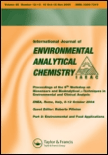
INTERNATIONAL JOURNAL OF ENVIRONMENTAL ANALYTICAL CHEMISTRY
Scope & Guideline
Driving innovation in environmental analysis.
Introduction
Aims and Scopes
- Environmental Monitoring and Analysis:
The journal aims to publish research that advances analytical methods for detecting and quantifying environmental pollutants, including heavy metals, pesticides, pharmaceuticals, and organic contaminants. - Health and Ecological Risk Assessment:
A significant focus is placed on assessing the potential health risks and ecological impacts posed by contaminants in environmental samples, emphasizing the importance of safety and sustainability. - Development of Innovative Materials and Methods:
The journal encourages studies that explore new materials, such as nanocomposites and functionalized adsorbents, for improved adsorption, degradation, and detection of pollutants. - Sustainable Practices and Green Chemistry:
Research that emphasizes environmentally friendly techniques for pollution remediation and the use of renewable resources in analytical chemistry is highlighted. - Interdisciplinary Research:
The journal promotes interdisciplinary studies that bridge environmental science, analytical chemistry, and public health, fostering collaboration across these fields.
Trending and Emerging
- Nanotechnology in Environmental Chemistry:
There is a growing emphasis on the development and application of nanomaterials for environmental remediation, detection, and analysis, highlighting their potential for enhanced performance in pollutant removal. - Integrated Approaches to Water Quality Management:
Studies focusing on integrated methodologies that combine various treatment processes for water purification are trending, reflecting an increased awareness of comprehensive water quality management. - Biosensors and Bioassays:
The use of biosensors for detecting environmental pollutants and assessing biological impacts is emerging as a significant theme, showcasing advancements in rapid and sensitive analytical techniques. - Circular Economy and Waste Utilization:
Research that explores the reuse of waste materials as adsorbents or catalysts in environmental remediation is gaining prominence, aligning with global sustainability goals. - Advanced Oxidation Processes (AOPs):
The application of AOPs for the degradation of persistent organic pollutants is increasingly featured, indicating a shift towards innovative, efficient, and environmentally friendly treatment technologies.
Declining or Waning
- Traditional Analytical Techniques:
There is a noticeable decline in the publication of studies focusing solely on traditional analytical methods, as the field moves towards more innovative and efficient techniques such as nanotechnology and advanced materials. - Limited Focus on Single Contaminants:
Research concentrating on individual contaminants without considering their interactions or the broader context of environmental health risks is becoming less prevalent. The trend is shifting towards more holistic approaches. - Static Risk Assessment Models:
Older models of risk assessment that do not incorporate dynamic environmental changes or emerging contaminants are less frequently published, as researchers seek more adaptable and comprehensive frameworks. - Environmental Impact Studies without Remediation Solutions:
Papers that only discuss the impact of pollutants without proposing remediation strategies or sustainable solutions are waning, reflecting a broader emphasis on actionable research.
Similar Journals

JOURNAL OF THE CHEMICAL SOCIETY OF PAKISTAN
Empowering Researchers, Transforming Chemistry.JOURNAL OF THE CHEMICAL SOCIETY OF PAKISTAN is a premier academic journal published by the Chemical Society of Pakistan, focusing on advancing the field of chemistry through rigorous research and scholarship. Established in 1996, this journal aims to disseminate high-quality research articles, reviews, and insights pertaining to various subfields of chemistry, making substantial contributions to both local and international scientific communities. With a current impact factor placing it in the Q4 category, the journal continues to foster discussions on emerging trends and innovations within the discipline. Additionally, it holds a Scopus rank of #305 out of 408, highlighting its growing influence despite being positioned in the 25th percentile. Although it is not an open-access journal, it provides a crucial platform for researchers and professionals in Pakistan and worldwide. The JOURNAL OF THE CHEMICAL SOCIETY OF PAKISTAN serves as a valuable resource for students, educators, and industry professionals alike, facilitating the exchange of knowledge and promoting advancements in chemical sciences.
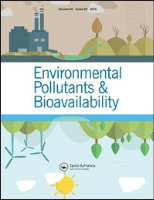
Environmental Pollutants and Bioavailability
Innovating Solutions for a Safer EnvironmentEnvironmental Pollutants and Bioavailability, published by Taylor & Francis Ltd, serves as a critical platform for disseminating high-quality research focused on the interactions between environmental contaminants and biological systems. Since its inception as an Open Access journal in 2019, it has rapidly gained recognition within the scientific community, achieving a commendable Q2 ranking in multiple categories including Chemical Health and Safety, Health, Toxicology and Mutagenesis, and Toxicology for the year 2023. The journal aims to bridge the gap between environmental science and public health by exploring innovative methodologies, risk assessments, and bioavailability studies related to pollutants. Located in the United Kingdom, Environmental Pollutants and Bioavailability is positioned to impact ongoing discourse and research practices in the fields of toxicology and environmental safety, making it an invaluable resource for researchers, professionals, and students dedicated to advancing knowledge in these critical areas.
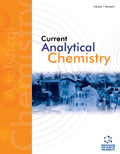
Current Analytical Chemistry
Advancing knowledge in practical and theoretical chemistry.Current Analytical Chemistry is a pivotal journal in the field of analytical chemistry, published by Bentham Science Publishers Ltd. Established to bridge the gap between fundamental research and practical applications, this journal offers a platform for the dissemination of significant advancements and innovations from the realms of chemical analysis techniques and methodologies. With an impressive scope covering both theoretical and applied analyses, it has successfully secured a Q3 category ranking in the 2023 metrics of Analytical Chemistry, positioned at #75 out of 156 in the Scopus rankings. Researchers, professionals, and students can expect to engage with high-quality content that reflects the latest trends and issues within the discipline. Although it currently does not offer Open Access options, the journal continuously strives to maintain high editorial standards that contribute to its impactful presence in the academic community. The convergence of ideas from 2006 to 2024 promises to uphold its reputation as a reliable source for cutting-edge research in analytical chemistry.

Analytical and Bioanalytical Chemistry Research
Advancing the Frontiers of Analytical Chemistry.Analytical and Bioanalytical Chemistry Research is an esteemed open-access journal published by the Iranian Chemical Society, dedicated to the advancement of knowledge in the fields of analytical chemistry, biochemistry, and spectroscopy. Since its inception in 2014, this journal has provided a platform for researchers, professionals, and students to publish and access high-quality research articles that contribute to the understanding of chemical analysis and bioanalytical methods. With an ISSN of 2383-093X and an open-access model that promotes global dissemination of findings, it ensures that innovative research reaches a broad audience. The journal has consolidated its presence in the scientific community, currently ranked in quartile Q4 for analytical chemistry, biochemistry, and spectroscopy as of 2023. Its Scopus rankings, including a percentile of 34th in Analytical Chemistry, reflect its commitment to quality research and scholarly contribution. Situated in Tehran, Iran, the journal serves as a vital resource for academic discourse, offering insights into emerging trends and methodologies in analytical and bioanalytical chemistry.
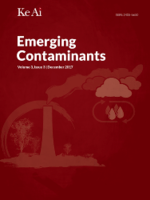
Emerging Contaminants
Exploring innovative solutions for a cleaner future.Emerging Contaminants is a leading international journal dedicated to the exploration and analysis of novel pollutants, their effects, and the methodologies for their detection and remediation. Published by KEAI PUBLISHING LTD in China, this Open Access journal has been at the forefront of scientific discourse since its inception in 2015, allowing unrestricted access to cutting-edge research. With an impressive categorization in the top Q1 quartile across diverse fields, including Health, Toxicology and Mutagenesis, and Public Health, it ranks remarkably high—41st out of 665 in Public Health and 10th out of 133 in Toxicology according to Scopus metrics, demonstrating its vital role in advancing our understanding of environmental health risks. By bridging the gap between academia and practical applications, Emerging Contaminants not only enriches the scientific community but also serves as an essential resource for policymakers and industry leaders seeking effective solutions to environmental challenges. Researchers, professionals, and students alike are encouraged to engage with the journal’s comprehensive studies and findings, contributing to a sustainable future.
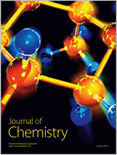
Journal of Chemistry
Innovating Chemistry for a Global AudienceJournal of Chemistry, published by Hindawi Ltd, serves as a critical platform for advancing knowledge in the field of chemistry, particularly in its miscellaneous sub-disciplines. With an impressive 2023 Scopus Rank of #123 out of 408 and positioned in the Q2 quartile, this journal exemplifies a robust academic rigor that appeals to researchers, professionals, and students alike. It features articles related to innovative chemical research and developments, catering to a diverse audience eager to contribute to the growing body of literature in the chemical sciences. The journal has been operational from 2013 to 2024, and its Open Access model ensures that findings are easily accessible to a global audience, fostering collaboration and knowledge sharing. With a commitment to quality and relevance, the Journal of Chemistry continues to play a significant role in shaping contemporary chemical research and education.
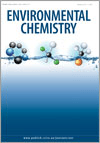
Environmental Chemistry
Pioneering Research for a Healthier PlanetEnvironmental Chemistry, published by CSIRO PUBLISHING, is a pivotal journal in the field of environmental studies, focusing on the intricate relationships between chemical processes and environmental systems. With an ISSN of 1448-2517 and an E-ISSN of 1449-8979, this journal serves as a vital resource for researchers, professionals, and students alike, aiming to deepen their understanding of environmental chemistry. The journal, which spans the period from 2004 to 2024, boasts respectable rankings, including a Q2 categorization in both Chemistry (miscellaneous) and Geochemistry and Petrology, alongside a Q3 ranking in Environmental Chemistry for 2023. With a focus on publishing high-quality research that addresses pressing environmental challenges, Environmental Chemistry continues to make significant contributions to the field, fostering advancements in sustainable practices and innovative solutions. Researchers are encouraged to explore this journal's comprehensive archive for cutting-edge studies and discussions that are imperative for the future of environmental health and policy.
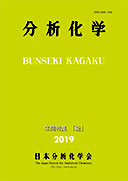
BUNSEKI KAGAKU
Illuminating the Path of Analytical DiscoveryBUNSEKI KAGAKU, published by the Japan Society Analytical Chemistry, is a reputable journal dedicated to the field of analytical chemistry. With an ISSN of 0525-1931, this journal has been a crucial outlet for scholarly communication since its inception in 1952, converging its publication years from 1954 to 1957 and from 1959 to 2024. Although it holds a Q4 category ranking in the most recent 2023 quartiles of analytical chemistry and ranks 153/156 in Scopus, it continues to serve as a platform for quality research, fostering advancements in the field. BUNSEKI KAGAKU is based in Tokyo, Japan, and emphasizes the critical importance of analytical techniques in scientific inquiry. With a commitment to professionalism and rigor, the journal provides a vital resource for researchers, students, and professionals seeking to explore innovative methodologies and contribute to the ongoing dialogue in analytical chemistry.
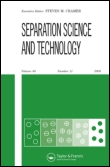
SEPARATION SCIENCE AND TECHNOLOGY
Connecting Scholars in the World of Separation ScienceSEPARATION SCIENCE AND TECHNOLOGY is a distinguished journal published by Taylor & Francis Inc, offering critical insights and advancements in the fields of chemistry and chemical engineering. With an ISSN of 0149-6395 and E-ISSN of 1520-5754, the journal spans a rich history from 1978 to 2024, providing a platform for scholarly articles that delve into innovative separation processes and technologies. Notably recognized in the 2023 category quartiles, the journal ranks Q2 in Chemical Engineering and Chemistry, alongside Q3 in Filtration and Separation and Process Chemistry and Technology, reflecting its significant impact and relevance in these research areas. With an impressive Scopus ranking, including a rank of #10/19 in Filtration and Separation, SEPARATION SCIENCE AND TECHNOLOGY is crucial for researchers and professionals seeking to enhance their understanding of separation techniques and applications. Although it operates under a subscription model, its contributions remain indispensable for the advancement of knowledge and technologies in separation science.
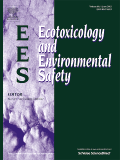
ECOTOXICOLOGY AND ENVIRONMENTAL SAFETY
Illuminating the path to sustainable environmental practices.ECOTOXICOLOGY AND ENVIRONMENTAL SAFETY, published by Academic Press Inc. Elsevier Science, stands as a premier journal in the field of environmental science, specializing in the intricate relationships between toxic substances and ecological systems. With a commendable impact factor and recognized as a Q1 journal in various categories including Health, Toxicology and Mutagenesis, and Public Health, it consistently ranks among the top publications in Scopus, placing it in the 96th percentile for Medicine and Public Health. Established in 1977, this journal addresses critical issues related to environmental safety and pollution, making it an essential resource for researchers, professionals, and students alike. Although it does not offer an open access option, the journal’s commitment to publishing rigorous and impactful research makes it a vital platform for advancing the understanding of ecotoxicological risk assessments and environmental protection strategies. For those dedicated to the intersection of science and public health, ECOTOXICOLOGY AND ENVIRONMENTAL SAFETY serves as a beacon of knowledge and innovative research.